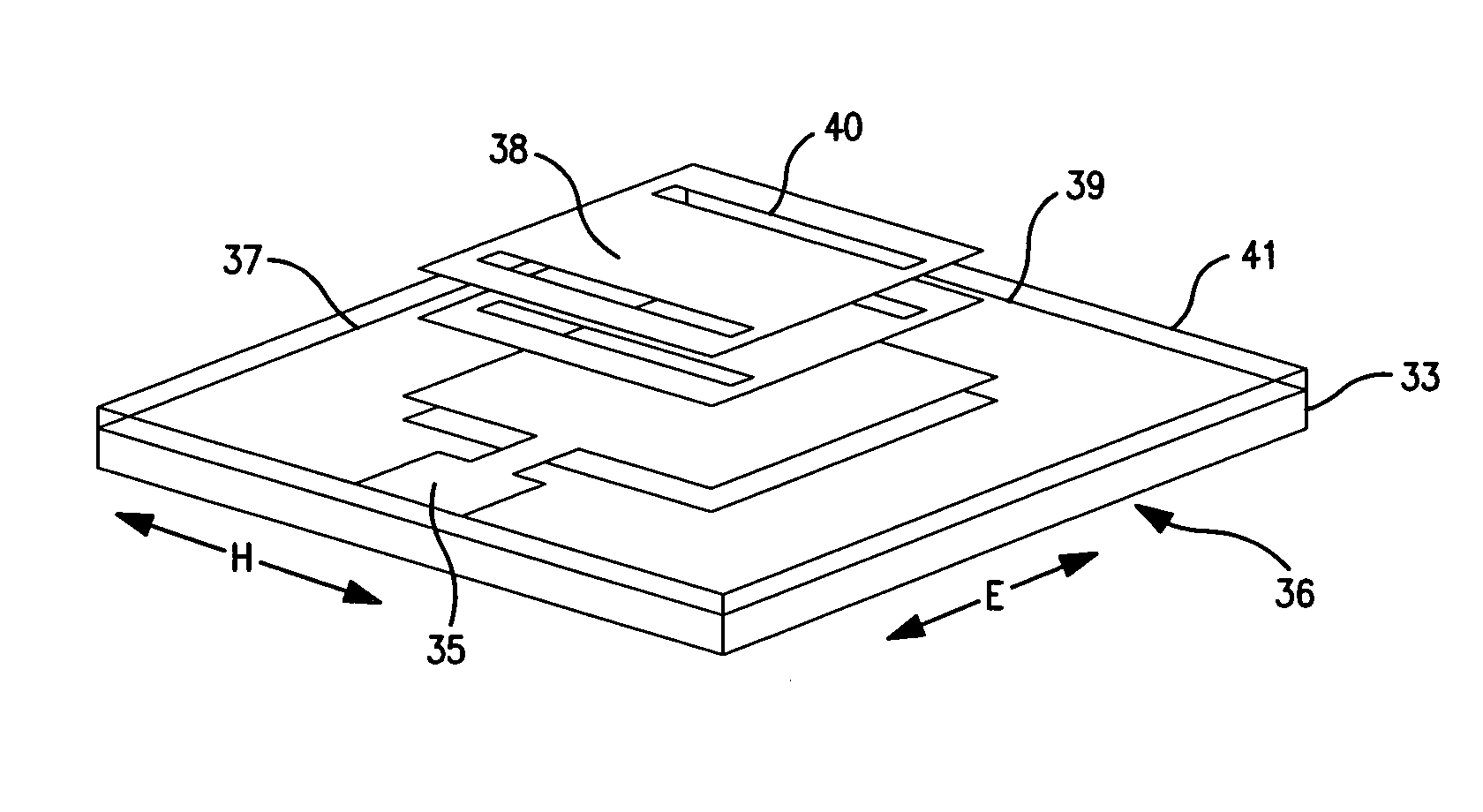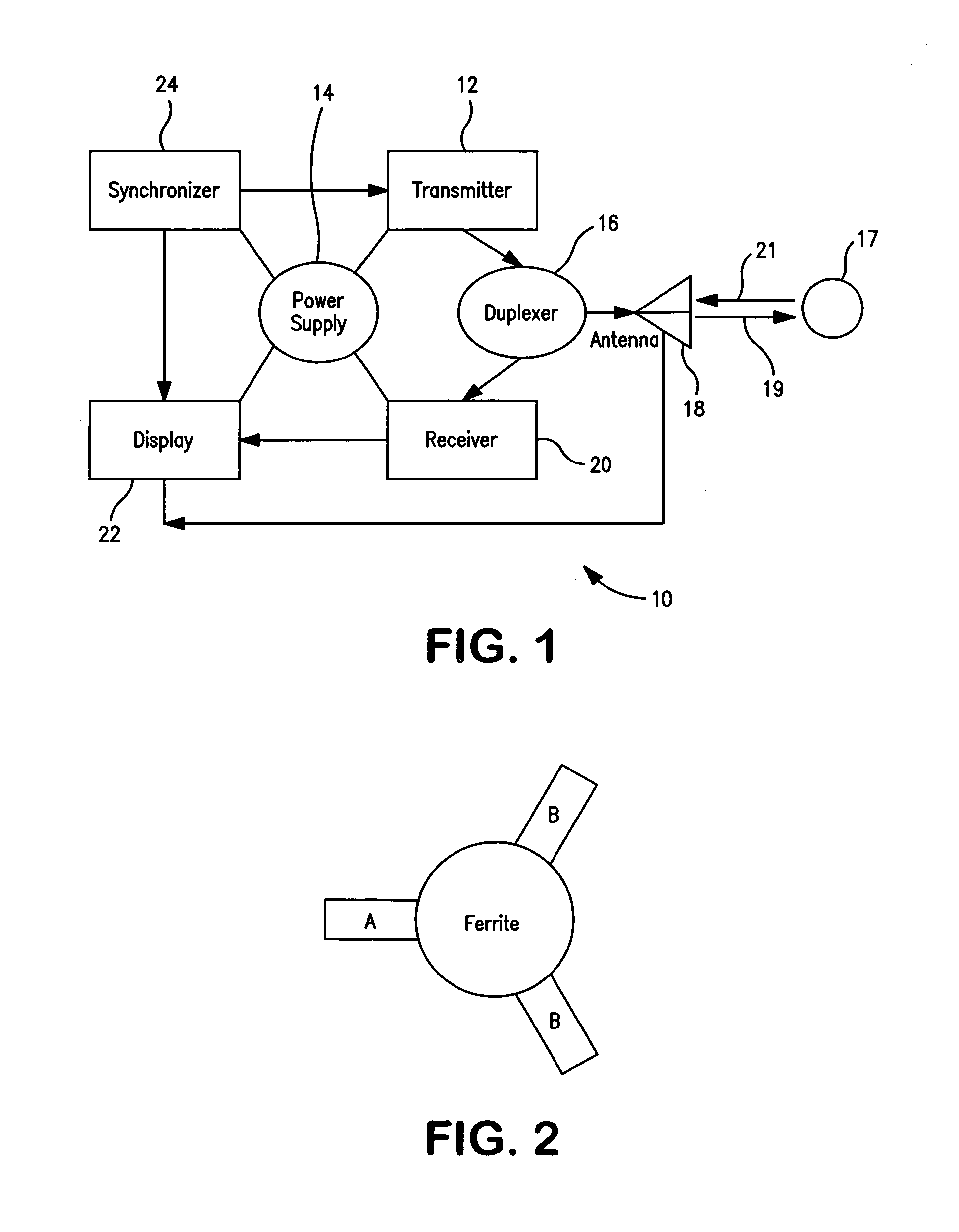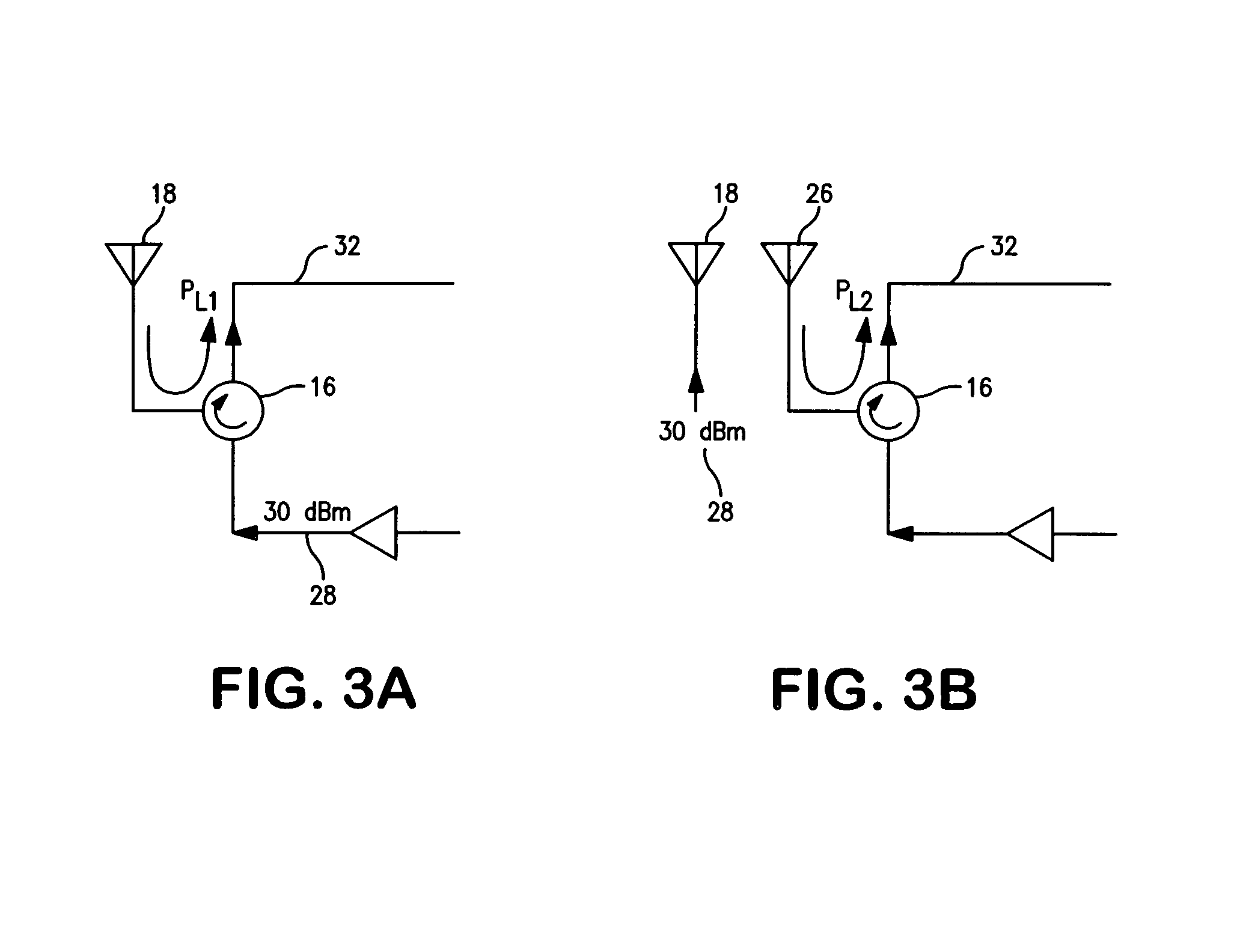System and method of using absorber-walls for mutual coupling reduction between microstrip antennas or brick wall antennas
a technology of absorber wall and microstrip antenna, which is applied in the direction of antenna details, instruments, antennas, etc., can solve the problems of leakage from a transmitting element to the return path of one or more neighboring antenna elements, limit the time of the radar pulse, and limited detection sensitivity
- Summary
- Abstract
- Description
- Claims
- Application Information
AI Technical Summary
Benefits of technology
Problems solved by technology
Method used
Image
Examples
Embodiment Construction
[0035]The present invention provides a system, method and apparatus for reducing antenna internal losses, including any finite return loss or mutual coupling losses. The system, method and apparatus are particularly suitable for reducing the finite return and mutual coupling loses in a stacked microstrip patch antenna so that is suitable for use as a microwave or radio frequency (RF) phased array antenna.
[0036]In a preferred embodiment that is suitable for use in radar applications, a compact, high directivity antenna having a multiplicity of transmitting elements has the mutual coupling losses between these elements reduced by placing a ring of microwave or RF absorbing material between the elements. In a further embodiment of the invention metal elements may also be used as part of the RF absorbing ring separating the antenna elements.
[0037]The horizontal size of a microstrip patch antenna element may be reduced by capacitive loading by, for instance, providing an underlying back ...
PUM
 Login to View More
Login to View More Abstract
Description
Claims
Application Information
 Login to View More
Login to View More - R&D
- Intellectual Property
- Life Sciences
- Materials
- Tech Scout
- Unparalleled Data Quality
- Higher Quality Content
- 60% Fewer Hallucinations
Browse by: Latest US Patents, China's latest patents, Technical Efficacy Thesaurus, Application Domain, Technology Topic, Popular Technical Reports.
© 2025 PatSnap. All rights reserved.Legal|Privacy policy|Modern Slavery Act Transparency Statement|Sitemap|About US| Contact US: help@patsnap.com



